ART, LIFE: KC Rep production evokes deep thoughts about art, which is perhaps the point
By Paul Horsley
The Kansas City Repertory Theatre’s production of Sunday in the Park with George, which opened September 18th at the Nelson-Atkins Museum’s Atkins Auditorium, is visually so complex that it keeps the eye occupied even at points where Stephen Sondheim’s drama lags. Perhaps that’s appropriate for a piece of musical theater that is actually about visual art, in particular Georges Seurat’s “A Sunday Afternoon on the Island of La Grande Jatte,” which inspired this musical in rather ingenious ways. “What were all the figures in this busy 1884 painting thinking when the artist put them onto his canvas?” the authors asked themselves. “And what were their relationships to each other?”
It’s a clever conceit and it catapulted Sondheim to creating a new kind of musical, some say, with a score filled with biting minimalism and lyrics infused with the signature wit and surprise of his best works—but with a considerable amount of philosophical rumination thrown in as well. Under Eric Rosen’s direction this co-production with the Nelson-Atkins Museum of Art, a tour de force of color-splashed scenic and costume designs (by Donald Eastman and Linda Roethke), manages to be visually and dramatically captivating while keeping a steadfast focus on the bittersweet romances: between Seurat and Dot, between an artist and his public, between the painter and his own creative spark.
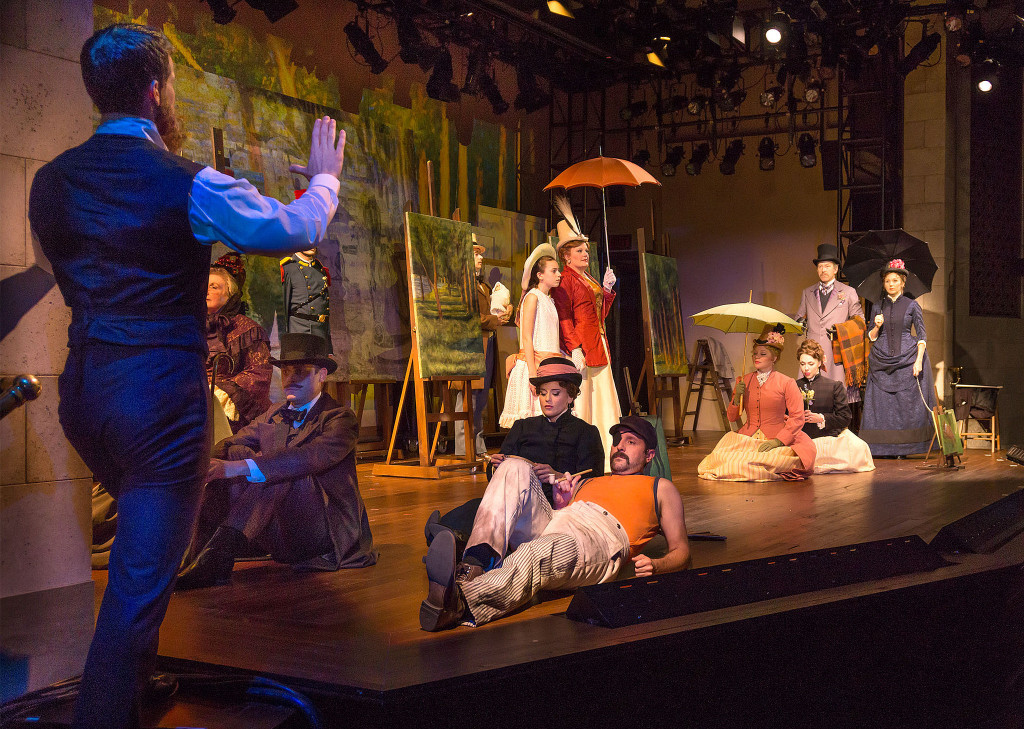
One rarely has the chance to refer to lighting as “virtuosic,” but Jeffrey Cady’s dazzling designs and Jason H. Thompson’s projections are so forcefully and inventively gathered as to almost become a character in the drama. One of the truly delicious moments of this play is, of course, the actor-by-actor assemblage onstage that creates the visual representation of Seurat’s painting at the end of Act I. When the actors re-group for the beginning of Act II, still frozen in the painting as it were (“It’s Hot Up Here”), the warm lighting necessary for the re-creation of “A Sunday Afternoon” shifts momentarily to harsh side-lighting, reminding us with a jolt that this is not a painting at all, but is instead a bunch of actors pretending to be in a painting. It’s a moment in which lighting expresses vividly the ultimate artificiality not just of the “pose” but of Sondheim’s musical.
Sara Jean Ford is delightful as Dot, for in addition to being a vivacious actor she is a real singer. She adopts the nasal, brassy Broadway sing-song only occasionally, as a “special effect”: Otherwise she sings with a clear, genuine soprano voice and can maintain uncanny focus during the rapid-fire “patter” of such songs as the opening “Sunday in the Park.” Claybourne Elder is passably serious as George, though his singing makes for less than poetry in the more melodic music. He effects a quite convincing transition to the “modern” George of Act II, though, relieved to be rid of the 19th-century trappings (as are we). Daniel Beeman is especially convincing as the Soldier, and Lauren Braton (Frieda), Charles Fugate (Jules), Seth Golay (Franz) and Melinda MacDonald (Yvonne) all make strong impressions. Special notice goes to Anthony T. Edwards, who leads the complex score with incredible skill from the keyboard, balancing concerns of tempo, amplification and pacing with aplomb.
Critics often grind gears overly in evaluating an actual piece of music or theater, when in fact (some might argue) they should be focusing on the particular performance of the piece. Yet when an artwork is about art itself, its fundamentally self-reflexive nature forces each new performance to grapple with the same issues of creativity-versus-conventionality that the artist in the piece is dealing with. (See what I mean about gear-grinding? Ha.) It is high praise indeed to say that the Rep’s production of Sunday in the Park is so deftly realized that one can’t avoid contemplating the nature of art and creativity, or more specifically the nature of musical theater and its place in American culture.
These reflections are sharpened by the Rep’s placement of the performances in an art museum, and they are further bolstered by the notion that (as many believe) Sondheim’s piece, which opened on Broadway in 1984, is as much about the composer-lyricist’s own creative crises as it is about Seurat and his painting. Sunday in the Park became central to a series of industry-wide self-evaluations during a period in which the musical itself seemed to have lost its way. Whether it found it or not is a separate discussion, but Sunday in the Park remains a momentary snapshot, frozen time like Seurat’s subjects, of at least one of the musico-dramatic possibilities available toward making the Broadway musical into a serious art form.
Sunday in the Park runs through October 4th. Call 816-235-2700 or go to kcrep.org.
.
IN BRIEF
* Kansas City Actors Theatre has put on an engrossing production of At Home at the Zoo, Edward Albee’s 2004 “filling out” of his Zoo Story of 45 years earlier. With tensile direction by Doug Weaver and an attractive, straightforward set design (by Jim Misenheimer and Shane Rowse), this two-act play about the alienation and sexual tension of three New Yorkers maintains a catapulting forward-motion. Act I is less convincing by itself than the still-gripping Act II that is the original play from 1960, but it sets up nicely the visceral punch of Zoo Story and allows us to contemplate the same themes: man’s animalistic nature, the craven curse of sexuality and more than anything the oppressiveness of sexual categories.
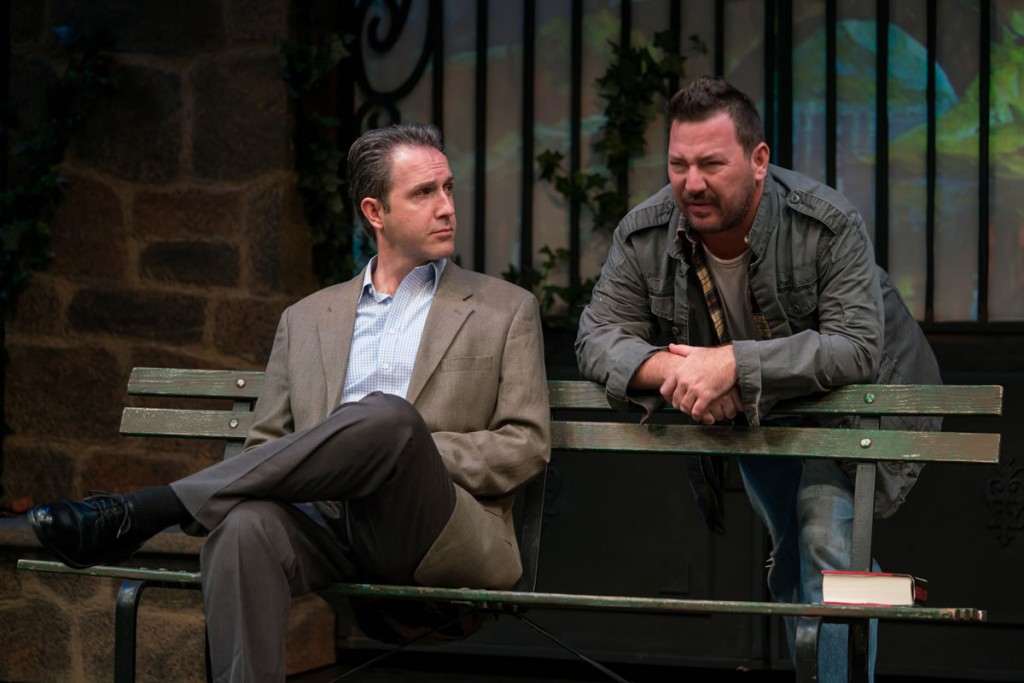
Brian Paulette is ideal as the staid, uptight Peter, whose boredom finds expression in both his domestic tranquility (with wife Ann, the new character of the 2004 play) and his career (as a publisher of stultifyingly dull textbooks). Jessalyn Kincaid is brilliant as the troubled, cat-on-a-hot-tin-roof wife, though Albee has given her a somewhat less-filled-out character than those of the men.
The center of the play is still Jerry, in particular his monologue of Act II, which in the hands of Forrest Attaway is one of the most powerful things I’ve seen on a Kansas City stage lately. Scruffy and restless, he paces and frets like the troubled soul that Jerry is, delivering the famously rapid-fire witticisms with equal parts sarcasm and inner torment. The explosive conclusion comes as a relief, as it is meant to, perhaps, though in the end you can’t help wondering whether Act I was really necessary after all.
At Home at the Zoo runs through September 27th at H&R Block City Stage, Union Station. Call 816-235-6222 or go to kcactors.org.
.
UNICORN OPENS SEASON WITH ODDITY
* The Oldest Boy tells an intriguing, otherworldly tale. Sarah Ruhl’s 2014 play, with which the Unicorn Theatre opened its season on August 26th, poses a question: What if Tibetan monks showed up at your door and announced that your 3-year-old son was the reincarnation of a lama, or Buddhist teacher? With broad theatrical strokes Sarah depicts the pain of a mother, played by Katie Kalahurka and identified simply as Mother, who travels a spiritual (and eventually literal) journey to help foster her son’s destiny. Father, a Tibetan-American (played by Vi Tran), accepts his son’s destiny but is just as conflicted as his wife about allowing his spirited son to be raised and educated by monks in India.
What removes this play even further from reality is the playwright’s indication that the son is to be played not by a real boy but by a puppet, which in this production is operated by Alex Espy (who also provides the child’s voice) and puppeteer Andi Meyer, both working under the deft direction of Paul Mesner. As the play progresses, and as the Boy becomes transfigured, in a sense, Alex himself begins to appear as the Boy.
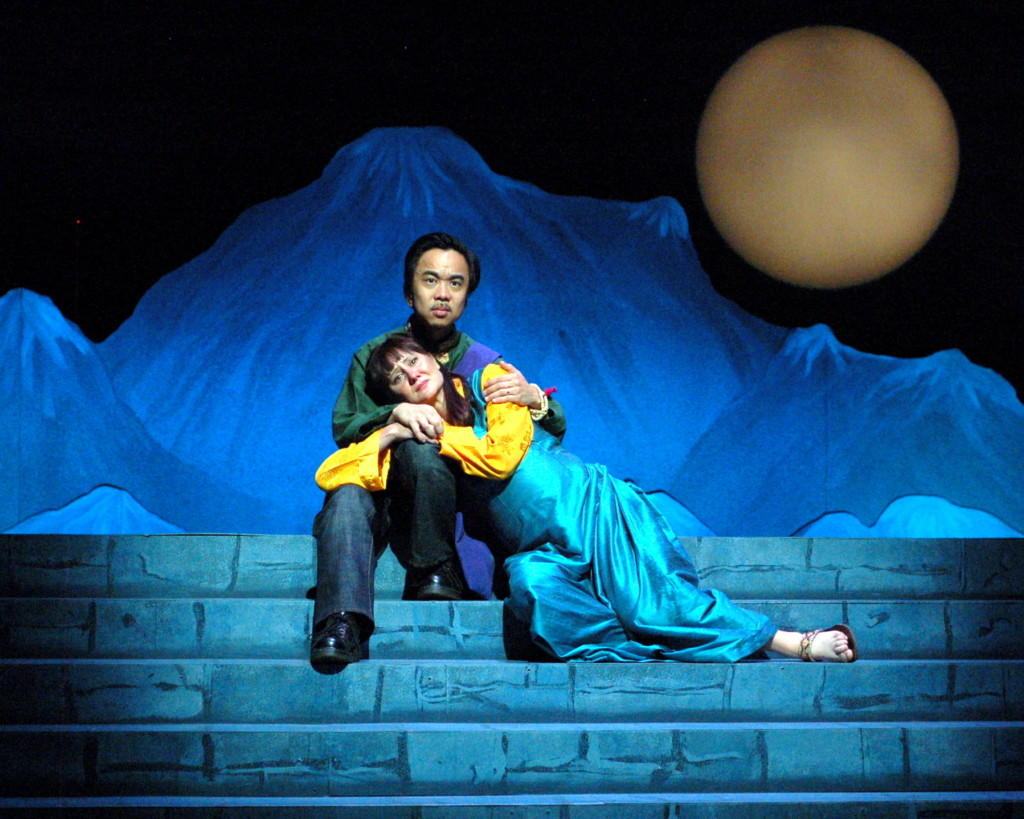
The play contains plenty of deep concepts about attachment and separation, or “letting go,” as dramaturg Amanda Boyle calls it in her printed essay on the Buddhist thought from which the drama grows. Fortunately Cynthia Levin’s sensitive stage direction helps ground the play in basic humanity, as we trace the parents’ traversal from skepticism to sadness and, finally, acceptance.
Philosophy aside, though, one has the sense of a play that has been “over-thought,” so that both the weird puppet-child and the dreamlike family drama are played out less as real human action than as fable. That’s okay except that some “earthbound” viewers might find it hard to get past the quotidian aspects of letting two robed strangers (played here by Wai Yim and Thomas Tong) take your toddler to the other side of the world. Faith being what it is, though, one realizes such a tale is not so far removed from that of the 12-year-old Jesus in the temple. His parents must have freaked out when he went missing, and even when they found him—teaching, listening and testifying like the prophet that he was rapidly becoming—they could scarcely have imagined the joys and terrors that lay ahead. Yet they did, ultimately, step out of the way and “let go.”
For tickets to the Unicorn Theatre’s next production, Tarell Alvin McCraney’s The Brothers Size (October 14th through November 8th), call 816-531-7529 or go to unicorntheatre.org.
.
To reach Paul Horsley, send email to phorsley@sbcglobal.net or find him on Facebook (paul.horsley.501) or Twitter (@phorsleycritic).
[slider_pro id=”2″]
[slider_pro id=”3″]
Features
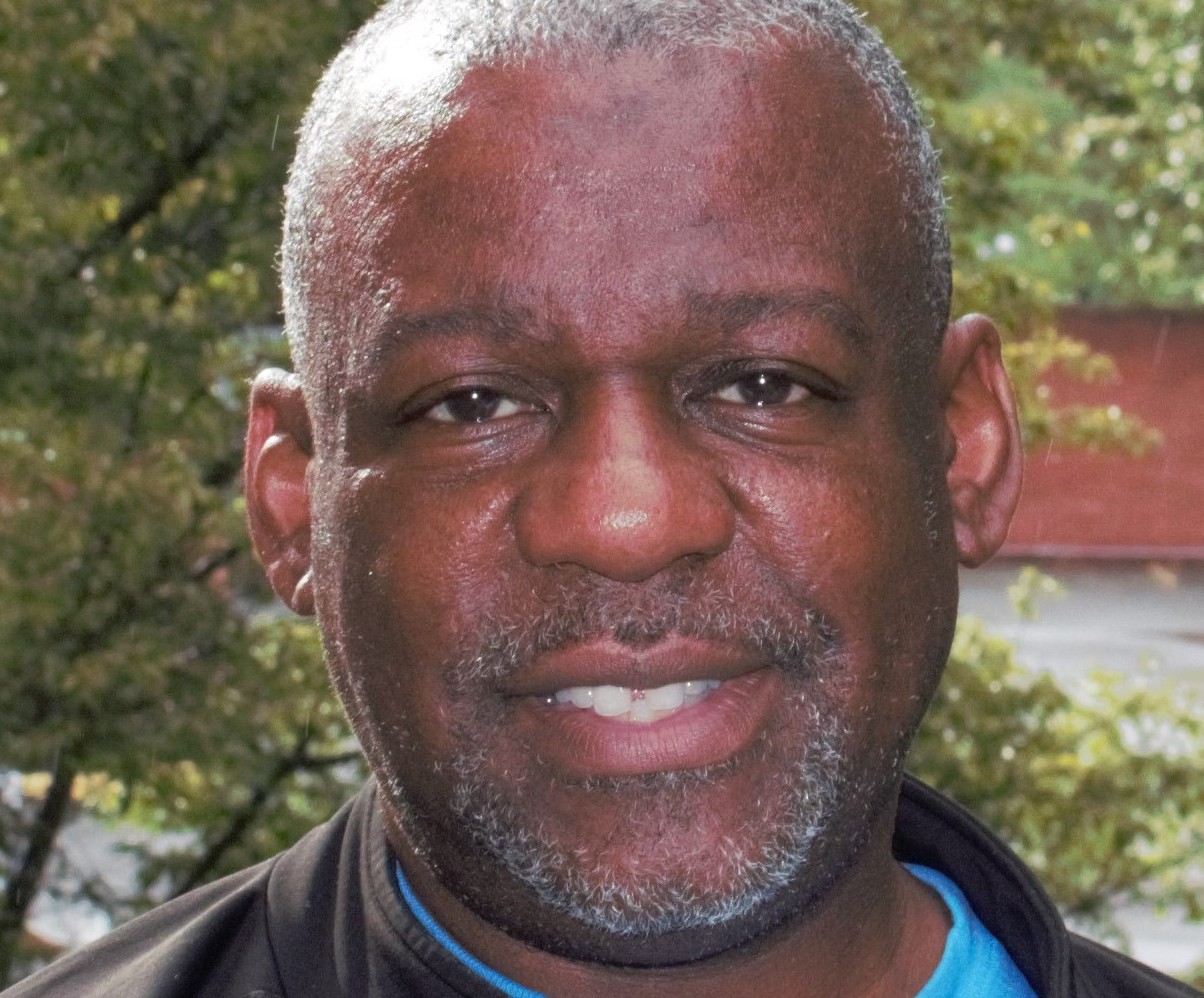
Tyrone Aiken danced prodigiously as a youth, trained at The Ailey School as a young adult, worked as a professional dancer at the height of the New York dance ferment,…
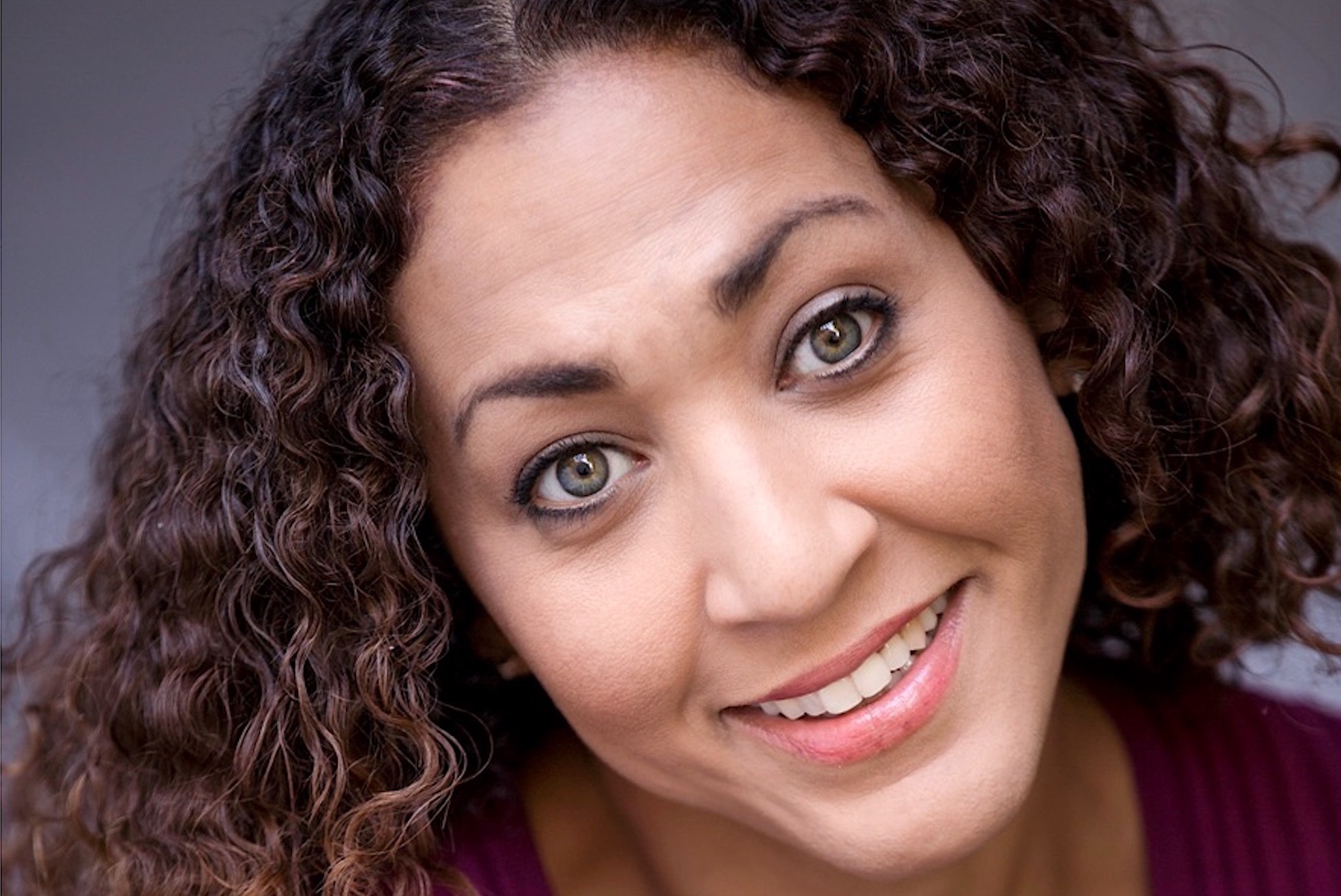
CAROLINE DAHM Dancer, choreographer, producer, master teacher, adjunct dance professor at The UMKC Conservatory, assistant director at Wylliams/Henry Contemporary Dance Company What I love about the Kansas City performing-arts scene: Kansas…
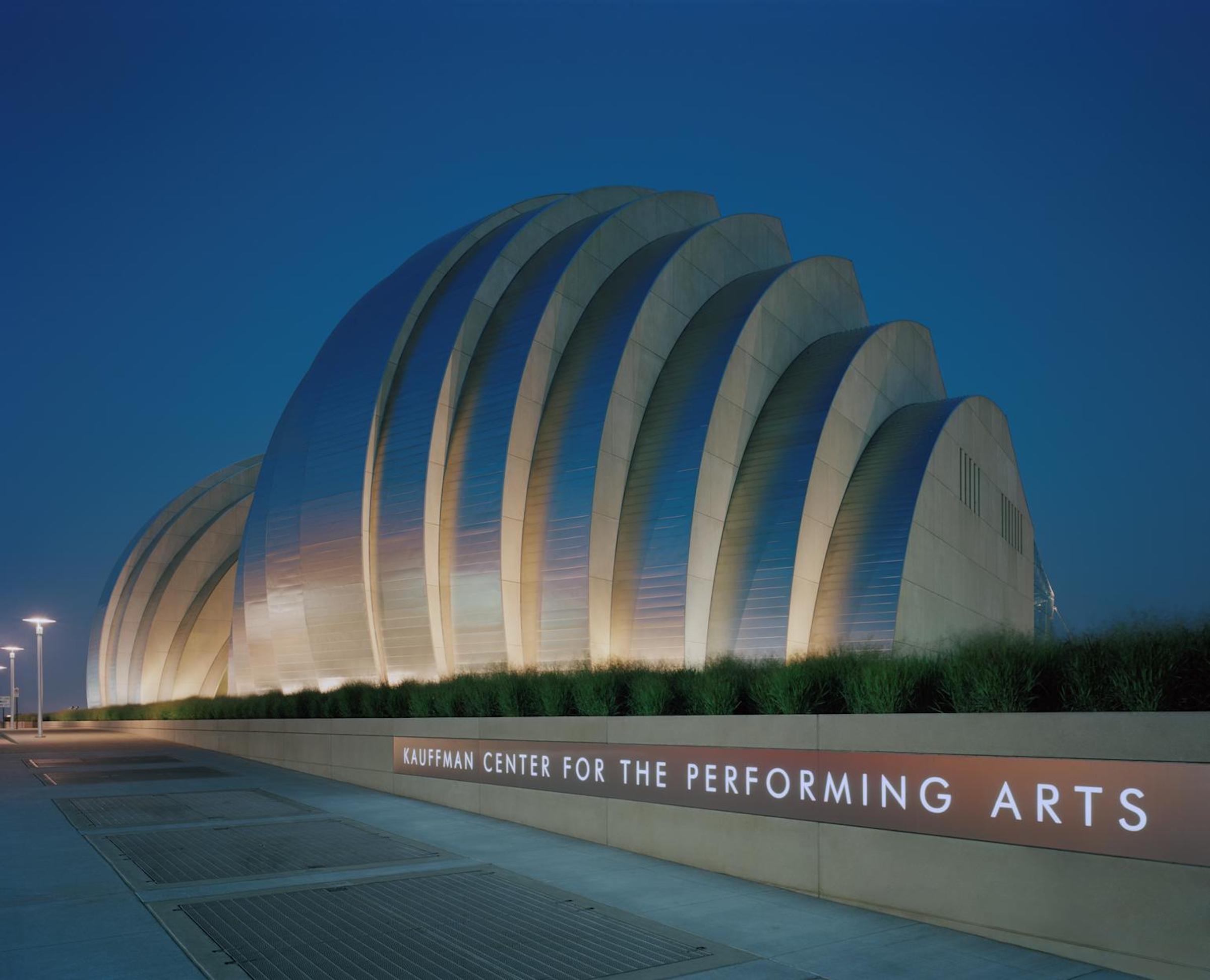
It’s difficult to remember what the Kansas City skyline looked like 20 years ago, before the Kauffman Center for the Performing Arts began to take shape at 16th and Broadway.…






